The letter Ḍād (ض) is one of the most distinctive letters in the Arabic language. It is often referred to as “the unique letter” because it has no equivalent in other languages. For new learners, it is essential to master the different forms of the letter Ḍād and how it is written in various positions within a word, due to its significant role in reading and writing accurately. In this article, we will explore the form of the letter Ḍād at the beginning, middle, and end of words, with educational examples to aid understanding.
The Arabic Letter Ḍād (ض): A Unique and Distinctive Character
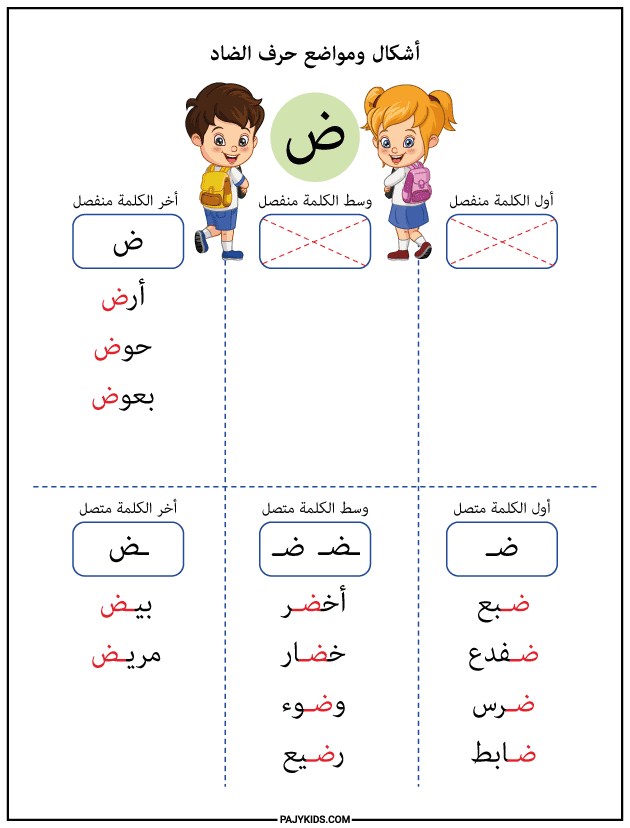
- The Form of Ḍād at the Beginning of a Word
When Letter Ḍād appears at the beginning of a word, it connects only to the following letter and not to any preceding letter, as it is the first letter. It takes the following shape: “ضـ”.
Examples: dabe (ضبع), dafdae (ضفدع), dirs (ضرس).
In this case, the letter is written with a small downward curve (tooth) and a short horizontal extension.
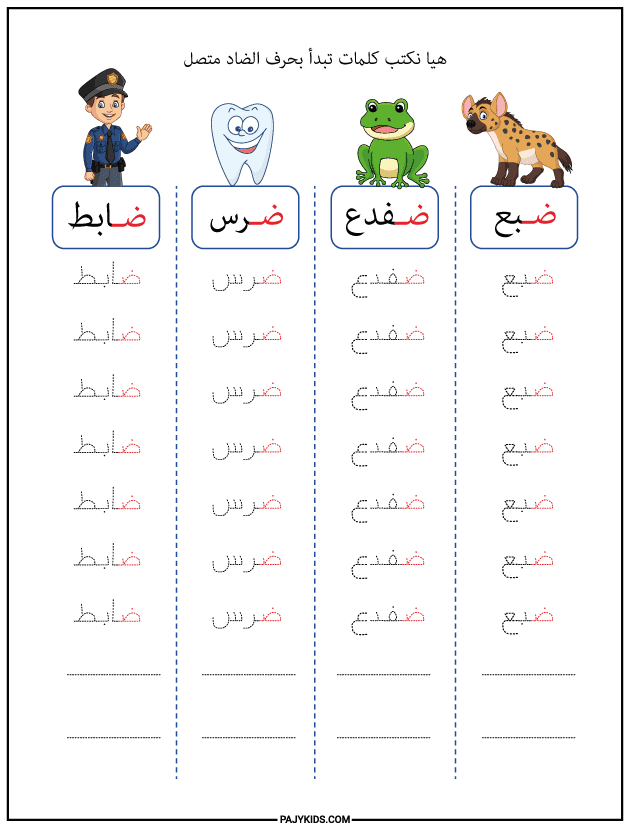
- The Form of Ḍād in the Middle of a Word
When Letter Ḍād appears in the middle of a word, it connects to both the preceding and the following letters. It takes the form: “ـضـ”.
Examples: radie (رضيع), wadaw’ (وضوء), khadar (خضار).
Here, the letter blends more intricately with neighboring letters. Attention must be paid to the size of the curve and the slant to ensure it looks correct.
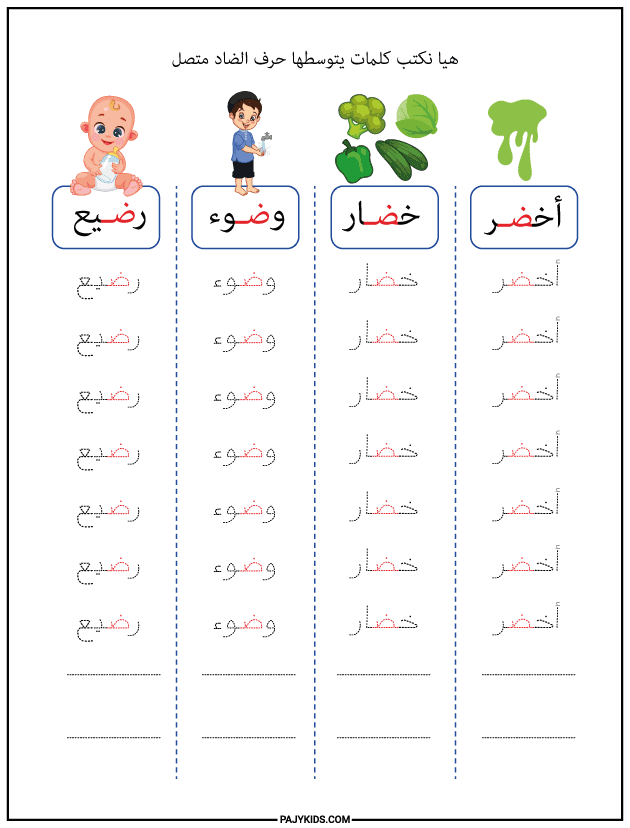
- The Form of Ḍād at the End of a Word (Connected)
When Letter Ḍād appears at the end of a word and is connected to the preceding letter, it is written as: “ـض”.
Examples: Marid (مريض), Bayḍ (بيض).
In this position, the letter retains its full curve but remains attached to the letter before it, giving the word a balanced visual appearance in handwriting.
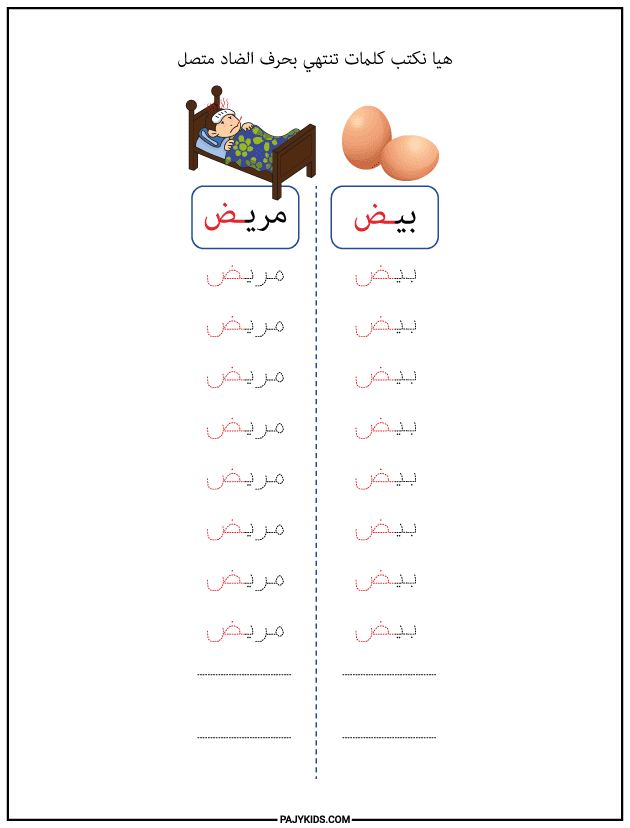
- The Form of Ḍād at the End of a Word (Isolated)
If Letter Ḍād appears at the end of a word following a letter that does not connect, it stands alone and takes its full form: “ض”.
Examples: Ḥawḍ (حوض), Arḍ (أرض).
Even though it comes at the end, its shape remains clear and distinctive, and it should be drawn precisely to ensure it is easily recognizable.
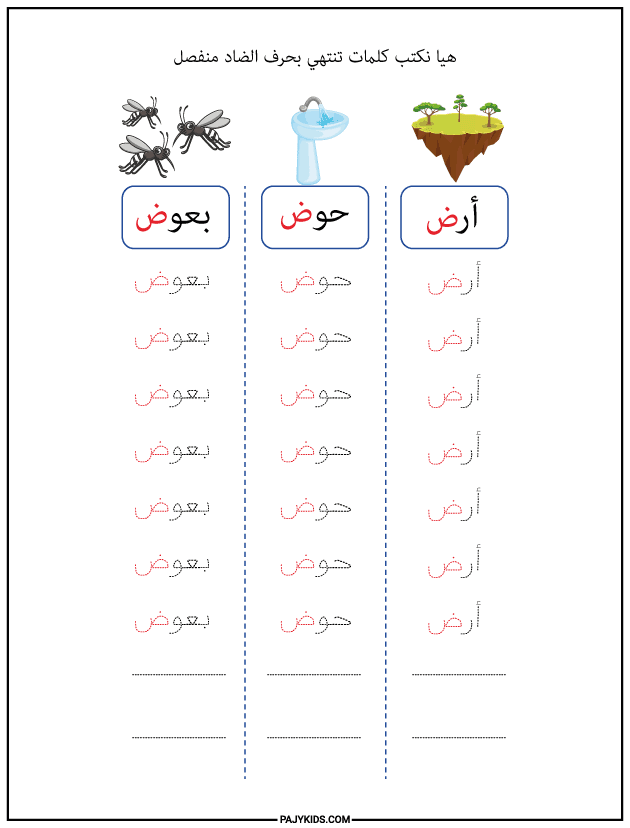
Mastering the forms of the letter Ḍād contributes to improved handwriting skills and enhances a student’s understanding of written texts. Due to its visual similarity to the letter Ṣād (ص), distinguishing between the two is a crucial skill in the early stages of learning Arabic. Additionally, Ḍād appears in many original Arabic words, highlighting the importance of teaching it correctly across various contexts.